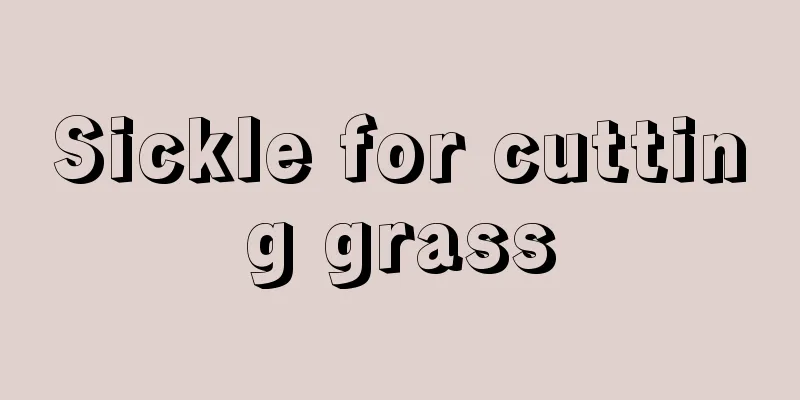Five Classics of Justice - Gokyoseigi

|
This is a collection of officially recognized interpretations of the Five Classics, compiled by Kong Yingda and others of the Tang Dynasty under imperial command and distributed in 653 (Yonghui 4). Emperor Daozong of the Tang Dynasty established academic institutions at the Guozijian (national university) as a national project, and attempted to organize and unify the conflict between the north and south and the wide range of complexity in the interpretation of the classics during the Six Dynasties period. He had Yan Shigu examine the "definitive edition" of the classics (630), and then mobilized many scholars including Kong Yingda to create the "Five Classics Instructions" (632-642). It was later renamed "Zhengyi" (Standard Interpretation) and published. Due to the tendencies of the scholars who compiled the works, many annotations from the Southern school were adopted, Wang Bi's annotations for the Book of Changes (Zhouyi), the Biography of Fake Kong Anguo for the Book of Shangshu (Shangshu), Du Yu's Collected Commentaries for the Spring and Autumn Annals (Shunju Sashiden), and Zheng Xuan's annotations, which are common to both the North and South, for the Book of Mao Poems (Shijing) and the Book of Rites (Laiqi). Furthermore, during the reign of Emperor Gaozong, Jia Gongyan wrote a commentary (a reinterpretation of the annotations) on the Zhou Rites and Rites, which he called the Seven Classics Zhengyi by imperial order. The creation of this Zhengyi put a framework on academics through the Imperial Examinations (Ming Jing department), while at the same time respecting those who had graduated from the Jinshi department, which tested on poetry and prose. As a result, the development of the study of classics stagnated after the Tang dynasty, with the exception of a few works such as the Spring and Autumn Annals. However, the survival of Han and Tang exegesis is largely due to the existence of this book. [Yoshiro Togawa] Source: Shogakukan Encyclopedia Nipponica About Encyclopedia Nipponica Information | Legend |
|
中国、唐(とう)の孔穎達(くようだつ)らが勅命で制作し、653年(永徽4)に頒布した五経の正統公認の解釈集成である。唐の大宗(たいそう)は国家事業として国子監(こくしかん)(国立大学)で学術をおこし、経学(けいがく)における六朝(りくちょう)期の経書解釈での南北対立や多岐にわたる繁雑さを整理統一するように企て、顔師古(がんしこ)に経文の「定本(ていほん)」を考定させ(630)、ついで孔穎達ら多数の学者を動員して「五経義訓」の作制を命じた(632~642)。のち「正義」(標準解釈)と改題して公布した。編纂(へんさん)にあたった学者の傾向から、南学の注釈を多く採用、『周易(しゅうえき)』では王弼(おうひつ)注、『尚書(しょうしょ)』では偽孔安国(こうあんこく)伝、『春秋左氏伝(しゅんじゅうさしでん)』では杜預(どよ)の集解(しっかい)をあげ、『毛(もう)詩』(詩経)、『礼記(らいき)』では南北共通の鄭玄(じょうげん)の箋注(せんちゅう)をとった。 さらに高宗(こうそう)のとき、賈公彦(かこうげん)が勅命で『周礼(しゅらい)』『儀礼(ぎらい)』の「疏(そ)」(経注の再解釈)を著し、あわせて「七経正義」とよんだ。この「正義」の成立は、科挙(かきょ)(明経(めいけい)科)を通して学術に枠をはめ、一方で詩文で試験する進士(しんじ)科の出身を尊重したため、唐代以後かえって経学の発展は、春秋学など若干を除いて停滞に陥った。ただ、漢唐訓詁(くんこ)学がいまに伝存したのは、この書が残されたことに多く負っている。 [戸川芳郎] 出典 小学館 日本大百科全書(ニッポニカ)日本大百科全書(ニッポニカ)について 情報 | 凡例 |
Recommend
Choyagunsai
A collection of similar books from the late Heian...
Law seal - Houin
〘Noun〙 Buddhist term. ① (translation of dharma-udd...
Gibbons, IR - Gibbons
…Microtubules are tubular fiber structures with a...
Ojoji Temple
A Jodo sect temple in Ochi, Nagano City. It is ca...
Shimoji [town] - Shimoji
A former town in Miyako-gun, southwest of Miyako I...
Hibernation - Toumin
When animals spend the winter almost completely q...
Reclams Bibliothek (English)
…A famous library founded in 1867 by Anton Philip...
Type 97 tank
… In Japan, a tank unit was established in 1925, ...
Penny Cyclopaedia
… [The emergence of popular magazines and women&#...
Ion exchange membrane method
Please see the "Ion exchange membrane method...
Sekisansatsu - Observation
…In 1615 (Genwa 1), the Edo Shogunate issued the ...
Cassini, Jean D.
…A family of French astronomers. Four generations...
Tobias George Smollett
A British novelist born in Scotland. He was popul...
Aseroe arachnoidea (English spelling)
...A species similar to the basket mushroom, with...
Desert - Kougen
〘noun〙① A desolate field. Wilderness. ※Honcho Mons...









